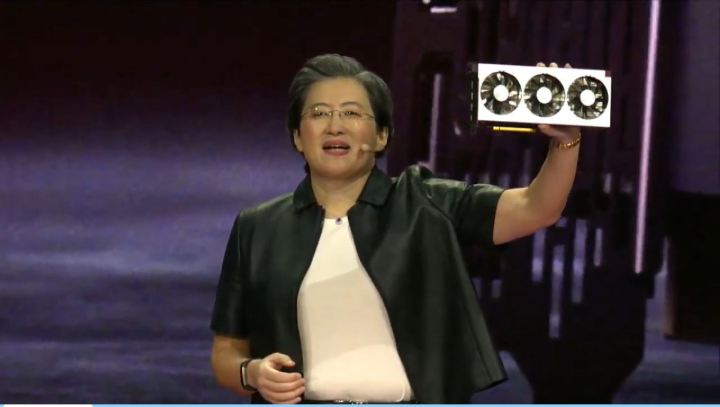
After months of rumors and speculation, AMD finally took the wraps off its new GPU during its keynote at CES 2019 in Las Vegas today. Taking on the latest from both Intel and Nvidia, the new AMD Radeon Vega VII is the “next generation of high-performance gaming GPUs,” and leads the chipmaking industry as the world’s first 7nm gaming GPU for consumers, according to AMD CEO Lisa Su.
More CES 2019 coverage
- Our CES 2019 Hub: The latest news, hands-on reviews, and more
- Everything Nvidia announced at CES: mobile RTX, the RTX 2060, and more
- Everything AMD announced at CES 2019: Ryzen 3, Radeon VII, and more
- HP Omen 15 (2019) gaming laptop: Our hands-on review
- The 5 best desktops of CES 2019, for everything from gaming to graphics
AMD’s Radeon Vega VII comes packed with 60 compute units and a clock rate of 1.8 GHz and is built on the second-generation AMD Vega architecture. Elsewhere, it sports 16GB of HBM2 memory at a bandwidth of 1TB a second. When compared to the last-generation Radeon RX Vega 64, the new Radeon Vega VII takes all that power and manages to push out more performance in some of the latest hit games. Running at 4K and on max settings, gamers can expect a 35 percent jump in Battlefield V, a 25 percent in Fortnite, and a 42 percent jump in Strange Brigade.
To back that up, AMD provided a live demo showing Devil May Cry 5 running at 4K on a desktop PC. David Polfeldt from Ubisoft’s Massive Entertainment also appeared and provided shots of Tom Clancy’s The Division 2 running at
“AMD Radeon VII is the highest-performance gaming graphics card we ever created. It is designed for gamers, creators and enthusiasts who demand ultra-high-quality visuals, uncompromising performance. and immersive gaming experiences” said Scott Herkelman, corporate vice president and general manager, Radeon Technologies Group at AMD.
With content creation software, the new AMD Radeon VII can also deliver up to 36 percent more performance over the last-generation Radeon RX Vega 64. In Blender and DaVinci Resolve 15, AMD promises a 27-percent performance jump, and then a 62 percent jump in GPU compute workloads based on OpenCL scoring.
The AMD Radeon VII will be available on February 7 for prices starting at $700. That is $300 cheaper than Nvidia’s latest high-end GPU, and comparable to the RTX 2080 the Radeon VII was directly compared with in benchmarks. For a limited time, there will also be a “Raise the Game Fully Loaded” bundle with the graphics card included along with PC versions of Devil May Cry 2, Tom Clancy’s The Division 2, and Devil May Cry 5.
Dell’s Alienware Area 51 2nd Generation Threadripper Edition will come with the new GPU on board.
Editors' Recommendations
- AMD wants to build on AI with its next generation of graphics cards
- Nvidia RTX 4070 Ti vs. AMD RX 7900 XT: Two odd choices for your next GPU
- AMD will reveal its next-gen Zen 4 CPUs at CES 2022
- The AMD Radeon 5600 XT seems poised to be the GTX 1060 of this generation



